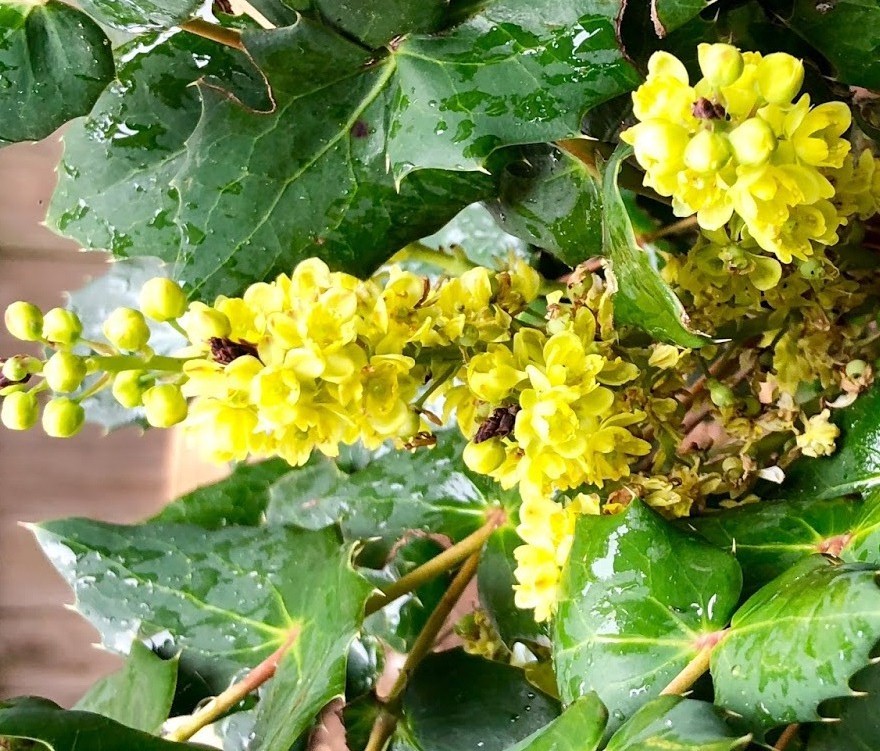Cascade barberry
(Berberis nervosa)

Description
Mahonia nervosa, commonly known as dwarf Oregon-grape, Cascade barberry, Cascade Oregon-grape, or dull Oregon-grape, is a flowering plant native to the northwest coast of North America from southern British Columbia south to central California, with an isolated population inland in northern Idaho. It is especially common in second growth, Douglas-fir or western redcedar forests, making use of those pools of sunlight that intermittently reach the ground. Some authors place the entire genus Mahonia within the genus Berberis. The plant was collected by Lewis and Clark during their famous expedition to the West before being described for science by Frederick T. Pursh in 1813. It is an evergreen shrub with short vertical stems, mostly less than 24 in (61 cm), while the leaves reach higher, rarely up to 7 ft (2.1 m) tall on exceptional sites. The leaves are compound and of opposite arrangement, with 9-19 leaflets; each leaflet is strongly toothed, reminiscent of holly, and somewhat shiny, but less so than tall Oregon-grape. The leaflets do not have a single central vein as in that species, but several veins arranged fan-like, branched from the leaflet base, hence the epithet nervosa. The flowers bloom from early to late spring and are similar to those of other Oregon-grapes, forming small yellow flowers in erect clusters up to 8 inches (20 cm) in length. Like other species in the genus Mahonia, the fruit are dark-blue, globose berries of 0.3 inches (7.6 mm) in diameter which occur in clusters and are tart-tasting.
Taxonomic tree:







